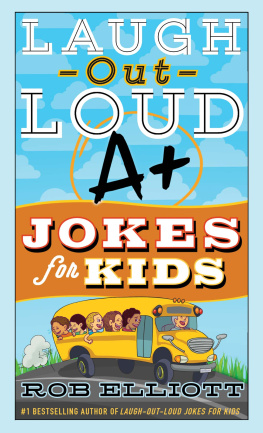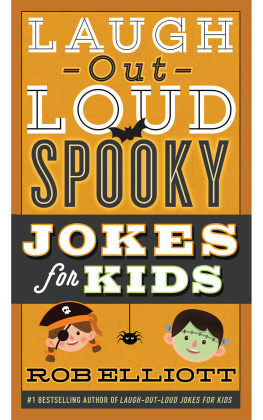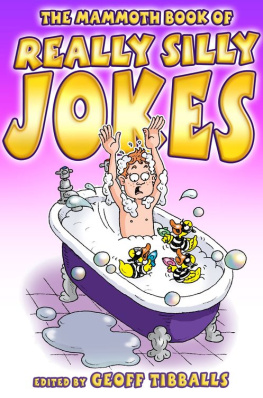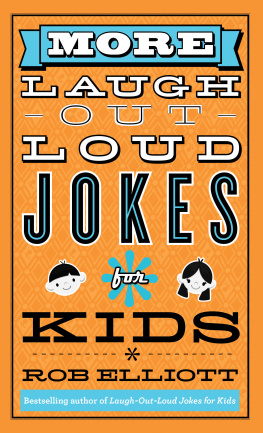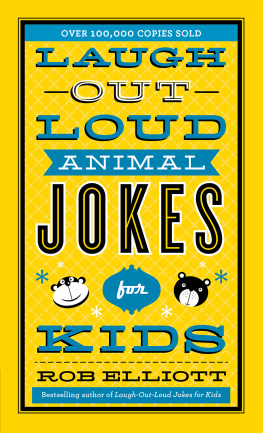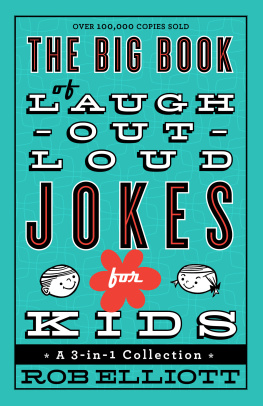Originally published in 1992 by The University Press of Kentucky
Published 2010 by Transaction Publishers
Published 2017 by Routledge
2 Park Square, Milton Park, Abingdon, Oxon OX14 4RN
711 Third Avenue, New York, NY 10017, USA
Routledge is an imprint of the Taylor & Francis Group, an informa business
New material in this edition copyright 2010 by Taylor & Francis.
All rights reserved. No part of this book may be reprinted or reproduced or utilised in any form or by any electronic, mechanical, or other means, now known or hereafter invented, including photocopying and recording, or in any information storage or retrieval system, without permission in writing from the publishers.
Notice:
Product or corporate names may be trademarks or registered trademarks, and are used only for identification and explanation without intent to infringe.
Library of Congress Catalog Number: 2010001595
Library of Congress Cataloging-in-Publication Data
Oring, Elliott, 1945
Jokes and their relations / Elliott Oring.
p.cm.
Includes bibliographical references and index.
ISBN 978-1-4128-1439-3 (alk. paper)
1. Wit and humor--History and criticism. 2. ewish wit and
humor--History and criticism. 3. Freud, Sigmund, 1856-1939.
4. Wit and humor--Psychological aspects. 5. Cognitive styles. I. Title.
PN6147.O75 2010
809.7--dc22
2010001595
ISBN 13: 978-1-4128-1439-3 (pbk)
Two and a half millennia ago, Greek philosophers mused about the nature of laughter. They considered its attributes, its causes, and its effects. Today, philosophers, psychologists, folklorists, anthropologists, sociologists, linguists, and literary scholars continue to contemplate the very same matters. Although they have asked new questions and offered fresh insights, the basic problems remain: why do we laugh, what do we laugh at, and what are the consequences of that laughter?
The laughter which the ancients contemplated is a behavior; a behavior not uniquely associated with amusement. Laughter can be engendered by feelings of joy, victory, and relief. Tickling and chemicals can also induce it, andpeculiarlylaughter may accompany feelings of nervousness, hysteria, and horror. Consequently, scholars today, in an effort to limit their attention to that which is found to be amusing, talk less about laughter than humor. Humor is an old word with a new sense. It derives from the Latin root mor, meaning moisture or liquid, and originally related to the four fluids of the body: blood, phlegm, yellow bile, and black bile. The relative proportions of these fluidsaccording to ancient and medieval physiological doctrinedetermined a persons physical and mental disposition. In time, the term shifted its reference from the fluids to the dispositions themselves, and eventually to the character of an individual as a whole. A person was sanguine, phlegmatic, choleric, or melancholic according to the balance of these fluids in the body. As character types became the objects of comic fictions, the old meaning of the word gave way to the more modern meaning of humor as something which is amusing and provokes laughter.
This is a book about humor, and it deals largelythough not entirelywith those laughter-provoking objects called jokes. When joke is used as a verb, it can point to different kinds of humor. When used as a noun, it tends to designate a specific literary genre. Jokes are short texts with punchlines. They are found in particular societies in particular historical periods. While humor seems to be a universalall societies create and respond to amusing stimulinot all societies tell or appreciate jokes. As a form, jokes are as distinctive and as culturally and historically situated as novels.
Jokes were particularly popular in twentieth-century Western societies. They circulated both orally and in print. A 2005 New York Times article suggested that the joke was dead. As a humorous form, it was pass. Certainly, stand-up comedians abandoned discrete jokes decades ago in favor of comic routines. The World Wide Web has probably reduced the demand for printed joke books since so many jokes are now posted on various websites or are topically arranged in online archives that are available free of charge. The Web has also spurred the creation of new kinds of humor: lists, cartoons, animations, videos, songs (lyrics accompanied by music), and doctored photographs. Many of these forms were either too difficult or expensive to produce and circulate before the advent of computer and Web technologies. These new or revised forms undoubtedly compete with traditional jokes for attention. Yet few people in the twenty-first century fail to find jokes in emails sent by relatives and friends. Those who receive them, usually pass at least some of them on. So the claim that the joke is dead is an overstatement. Of course, forwarding jokes electronically is very different from retelling them orally. There is less social involvement, and there is no creativity involved in simply clicking on the forward button in an email program. Consequently, oral joke telling may become a less widespread activity than it has been and fall more to the province of oral performance artists.
The issues addressed in this volume revolve around the nature of humor, the nature of jokes, and whatif anythingthey might mean. No grand theories of humor are put forward. The problem with grand theories is that they tend to offer a single answer to cover all situations. It would be convenient if such theories universally applied. Unfortunately, they may conflict with one another, and they are often found wanting when applied to specific cases.
There are three basic kinds of humor theories: those concerned with the motivations of humor; those with the effects or functions of humor; and those directed at the humorous stimulus itself. Sigmund Freuds proposition that humor is disguised aggression is a motivational theory. In jokes and other forms of humor, aggressive and sexual impulses are made socially acceptable to society. Thomas Hobbess observation that laughter emanates from the sense of ones superiority over others is another example of a motivational theory. Most people could recognize situations in which these theories might apply and seem true. They should also be able to recognize, however, numerous instances in which these theories fail to explain the data under consideration.
Theories based on the effects or functions of humor are generally characterized as release and relief theories. These theories hold that humor provides an outlet for certain unrecognized tensions that might otherwise disturb the organism. Humor, in other words, is cathartic and therapeutic. It is ego enhancing, can promote a sense of mastery, and give insight into the self. It can even be the path to personal liberation.
Theories that focus on the objects of humor are concerned with what makes them funny. These theories, for the most part, are variants of what is called incongruity theory. What is found to be amusing and makes humans laugh or smile is incongruityor a special kind of incongruityperceived in objects, language, and behavior.



